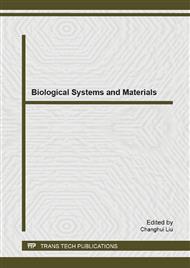[1]
Y. Takeuchi, D, Ge, N. Asajawa, Automated polishing process with a human-like dexterous robot, Proc. IEEE Int. Conf. on Robotics and Automation. 3 (1993) 950-956.
DOI: 10.1109/robot.1993.292266
Google Scholar
[2]
Y. Takeuchi, N. Askawa, D.E. Ge, Automation of polishing work by an industrial robot (system of polishing robot), JSME Int. J Series C: Dynamics, Control, Robotics, Design and Manufacturing, 36(4), (1993), 556-561.
DOI: 10.1299/jsmec1993.36.556
Google Scholar
[3]
Y.N. Hu and Y.H. Chen, Implementation of a robot system for sculptured surface cutting. Part 2. Finish machining, Int J Adv Manuf Technol, 15(9) (1999) 630-639.
DOI: 10.1007/s001700050112
Google Scholar
[4]
H.Y. Tam and C.H. Lui, Robotic polishing of free-form surfaces using scanning paths. J Mater. Process Technol., 95(1-3), (1999) 191-200.
DOI: 10.1016/s0924-0136(99)00338-6
Google Scholar
[5]
T. Furukawa and D.C. Rye, Automated polishing of an unknown three-dimensional surface, Robotics and Computer-Integrated Manufacturing, 12(3), (1996) 261-270.
DOI: 10.1016/0736-5845(96)00004-x
Google Scholar
[6]
P. Ro, B.R. Lee Two-arm kinematic posture optimization for fixtureless assembly. Journal of Robotic Systems, 12(1)(1995) 55-65.
DOI: 10.1002/rob.4620120106
Google Scholar
[7]
P. Chiacchio, S. Chiaverini, B. Siciliano, Direct and inverse kinematics for coordinated motion tasks of a two-manipulator system, ASME J. Dyn. Syst. Meas. Contr., 118 (1996) 691-697.
DOI: 10.1115/1.2802344
Google Scholar
[8]
E. Tabarah, B. Benhabib, R.G. Fenton, Optimal motion coordination of two robots - a polynomial parameterization approach to trajectory resolution, Journal of Robotic Systems, 11(7) (1994) 615-629.
DOI: 10.1002/rob.4620110705
Google Scholar
[9]
S. Ahmad, S. Luo, Coordinated motion control of multiple robotic devices for welding and redundancy coordination through constrained optimization in Cartesian space. IEEE Trans. robotics and automat., 5(4)(1989)409-417.
DOI: 10.1109/70.88055
Google Scholar
[10]
H. -k. Huang, G.C. Lin, Rapid and flexible prototyping through a dual-robot workcell, Robotics and Computer-Integrated Manufacturing, 19(3) (2003) 263-272.
DOI: 10.1016/s0736-5845(03)00022-x
Google Scholar
[11]
J. Huang., Interference-free tool-path generation in the NC machining of parametric compound surfaces, Computer-Aided Design, 24(12)1992, 667-677.
DOI: 10.1016/0010-4485(92)90022-3
Google Scholar
[12]
R. -S. Lin, Y. Koren, Efficient tool-path planning for machining free-form surfaces, Journal of Engineering for Industry, Transactions of the ASME. 118(1) (1996) 20-28.
DOI: 10.1115/1.2803642
Google Scholar


